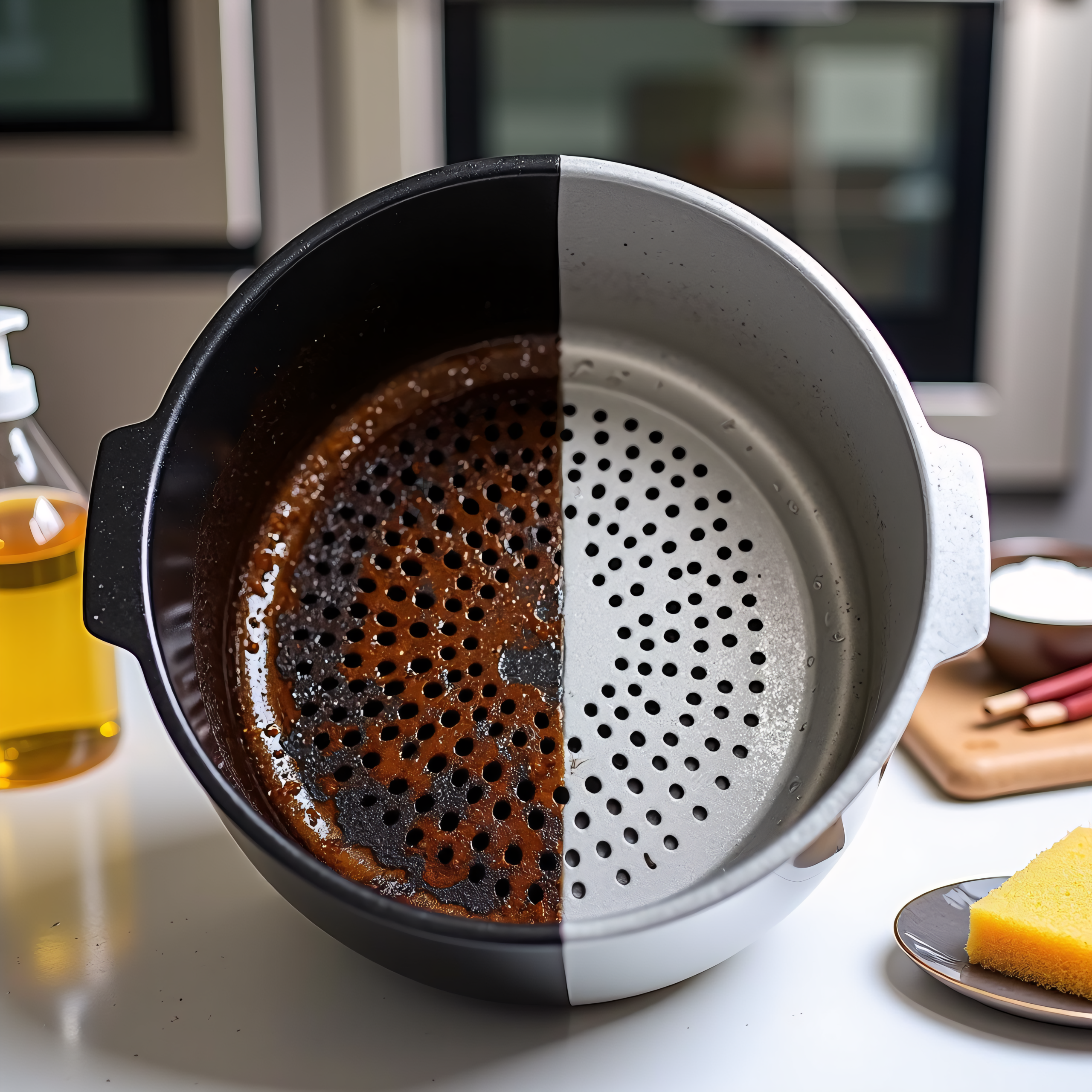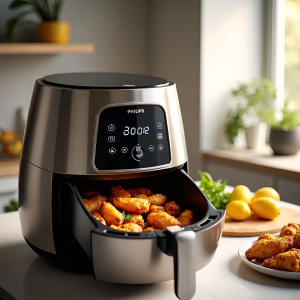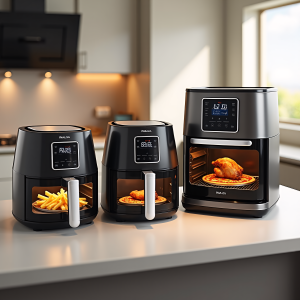The tantalizing aroma of crispy fries, perfectly roasted vegetables, or succulent chicken – the air fryer promises culinary delights. But the post-frying reality? A greasy, food-encrusted basket that can feel daunting to clean. This comprehensive guide will transform your air fryer cleaning experience, ensuring your appliance remains in peak condition, delivering delicious results for years to come. We’ll cover everything from daily maintenance to deep cleaning, odor removal, and troubleshooting common issues. This guide is applicable to all air fryer models, whether basket-style or oven-style, although specific cleaning methods might vary slightly depending on the make and model. Always refer to your manufacturer’s instructions for precise details.
Understanding Your Air Fryer: Anatomy & Materials
Before diving into cleaning techniques, let’s familiarize ourselves with the components of your air fryer. Most air fryers consist of several key parts:
- Basket: This is usually made of non-stick coated materials (like PTFE or ceramic), stainless steel, or sometimes even a combination. The coating type significantly impacts cleaning methods and durability. Non-stick coatings offer easy cleaning but can scratch easily, reducing their effectiveness over time. Stainless steel is more durable but can stain.
- Heating Element: This is the heart of your air fryer, responsible for generating the hot air. Never immerse this component in water.
- Fan: The fan circulates the hot air for even cooking. Gentle cleaning is crucial to keep this component functioning properly.
- Housing: This is the main body of the air fryer, typically made of plastic or metal. It requires regular wiping to maintain cleanliness.
- Drip Pan/Tray: This collects excess grease and food particles. Thorough cleaning of this component is crucial for preventing unpleasant smells and maintaining hygiene.
- Controls: These control the temperature and cooking time. Avoid getting these wet during cleaning.
It’s vital to understand your specific air fryer model, as materials and designs can vary. Always consult your owner’s manual for manufacturer-recommended cleaning procedures.
Daily & After-Each-Use Cleaning: Maintaining a Pristine Air Fryer
The key to effortless air fryer cleaning is consistency. After each use, follow these steps:
- Unplug and Cool: Always unplug your air fryer from the power source and allow it to cool completely before cleaning.
- Basket Cleaning: Handwashing is generally recommended for the basket. Use warm soapy water and a soft sponge or non-abrasive brush to gently scrub away food residue. Avoid harsh scrubbing, which can damage non-stick coatings. Some baskets are dishwasher-safe but always check the manufacturer’s instructions first. Using the dishwasher might reduce the effectiveness of the non-stick coating over time due to the harsh detergents used.
- Drip Pan/Tray Cleaning: Clean the drip pan/tray immediately after each use to prevent grease buildup. Soaking in hot, soapy water can help loosen stubborn food particles.
- Exterior Wiping: Wipe down the exterior of the air fryer with a damp cloth and mild dish soap. A diluted vinegar solution can help remove sticky residue.
- Never Submerge: Never immerse the main air fryer unit in water. This could cause damage to electrical components and create a serious safety hazard.
Tackling Tough Grease & Grime: Weekly Deep Cleaning
Once a week (or more frequently, depending on usage), perform a more thorough deep clean:
- Disassembly: Carefully disassemble any removable parts (always consult your manual first).
-
Degreasing the Basket: For stubborn grease, try these methods:
- Baking Soda Paste: Make a paste of baking soda and water, apply it to the basket, and let it sit for 30 minutes before scrubbing
- Soaking: Soak the basket in hot, soapy water for an extended period.
- Vinegar Solution: A solution of equal parts water and vinegar can also be effective.
- Cleaning the Heating Element & Fan: Use a soft brush or a slightly damp cloth to gently remove dust and debris from the heating element and fan. Avoid getting moisture near the electrical components.
- Interior Cleaning: Wipe the interior housing with a damp cloth and mild detergent.
- Reassembly: Ensure all parts are completely dry before reassembling.
Banishing Air Fryer Smells: Odor Elimination Techniques
Persistent odors can be a nuisance. Here are some effective odor elimination techniques:
- Vinegar Steam Clean: Add a cup of white vinegar and a cup of water to the air fryer basket and run it on a low setting for a few minutes.
- Lemon Juice Steam Clean: A similar technique can be used with lemon juice instead of vinegar.
- Baking Soda: Place an open container of baking soda inside the air fryer to absorb odors.
- Activated Charcoal: Small pouches of activated charcoal can also be effective odor absorbers.
- Prevention: Regular cleaning and prompt attention to spills are the best preventative measures.
Air Fryer Maintenance: Extending the Life of Your Appliance
Regular maintenance will prolong the life of your air fryer:
- Regular Inspection: Check the power cord, fan, and heating element for any signs of damage.
- Cleaning Air Vents: Ensure the air vents are clear of debris to prevent overheating.
- Coating Care: Avoid abrasive cleaners and metal utensils to protect non-stick coatings.
- Storage: Store your air fryer in a clean, dry place to prevent dust accumulation.
- Water Quality: Using filtered water for cleaning can reduce mineral buildup.
Troubleshooting Common Air Fryer Cleaning Issues
Even with regular cleaning, you might encounter some stubborn issues:
- Burnt-on Food: Try extended soaking, stronger cleaning solutions, or a combination of baking soda and vinegar paste.
- Grease: Commercial degreasers (specifically designed for kitchen use) can be effective.
- Rust (on steel baskets): Use a vinegar and baking soda paste to remove rust. Thorough drying is essential to prevent recurrence.
- Discoloration: Use appropriate cleaning solutions for the specific material of the discolored part.
- Sticky Controls: Use a slightly damp cloth to gently clean the controls, avoiding excessive moisture.
Air Fryer Cleaning Don’ts: Avoiding Damage & Ensuring Safety
To avoid damage and ensure safety, always remember these don’ts :
- Never submerge the main unit in water.
- Avoid harsh abrasive cleaners and scouring pads.
- Do not use metal utensils on non-stick surfaces.
- Don’t operate the air fryer while disassembled or wet.
- Avoid using excessive amounts of water during cleaning.
- Don’t ignore warning signs of damage (sparking, frayed cords).
Conclusion
Regular cleaning and maintenance are crucial for ensuring your air fryer’s longevity, optimal performance, and food safety. By following the tips and techniques outlined in this guide, you can keep your air fryer sparkling clean and ready to create delicious, crispy meals for years to come. Read more on our blogpost The Ultimate Guide to Air Fryers: A Beginner’s Handbook to Crispy, Healthy Cooking or check out The Ultimate Guide for Beginners – What It Is, How It Works & Why You Need One.
Frequently Asked Questions (FAQ)
Q: Can I use bleach to clean my air fryer?
A: No, bleach is too harsh and can damage the non-stick coating of your air fryer basket and potentially harm the other components. Stick to mild detergents, baking soda, and vinegar for cleaning.
Q: My air fryer smells even after cleaning. What should I do?
A: Try a vinegar or lemon juice steam clean to eliminate lingering odors. Leaving an open container of baking soda or activated charcoal inside the air fryer can also help absorb odors. Ensure all food residue is completely removed.
Q: How often should I deep clean my air fryer?
A: A weekly deep clean is recommended, but you may need to do it more often depending on how frequently you use your air fryer. Pay close attention to the drip tray, as it tends to accumulate grease and food particles quickly.
Q: My air fryer basket is scratched. What can I do?
A: Scratches on the non-stick coating can reduce its effectiveness. Be more gentle with cleaning and avoid abrasive tools in the future. Unfortunately, there’s no way to repair scratched non-stick surfaces.
Q: Is it safe to put my air fryer basket in the dishwasher?
A: Check your air fryer’s manual; some baskets are dishwasher-safe, while others are not. Even if dishwasher-safe, repeated use of the dishwasher can damage the non-stick coating over time. Handwashing is generally recommended for better longevity.



